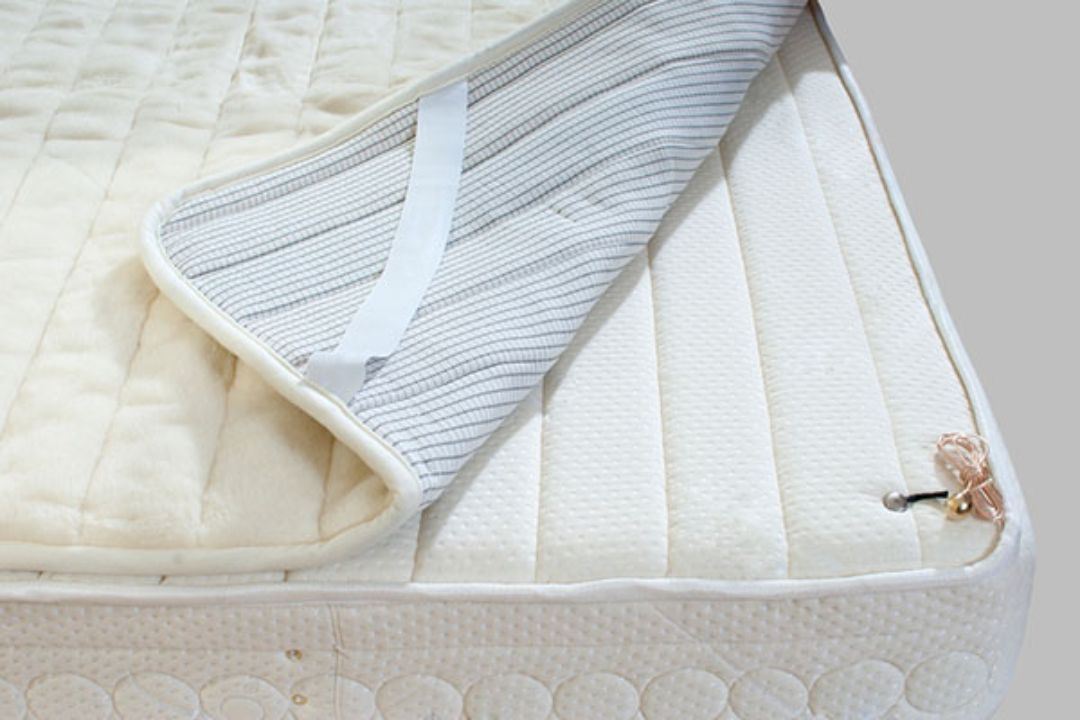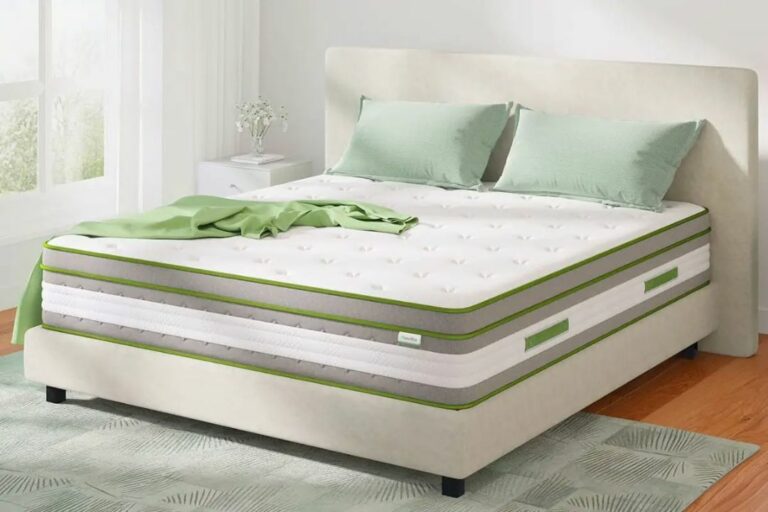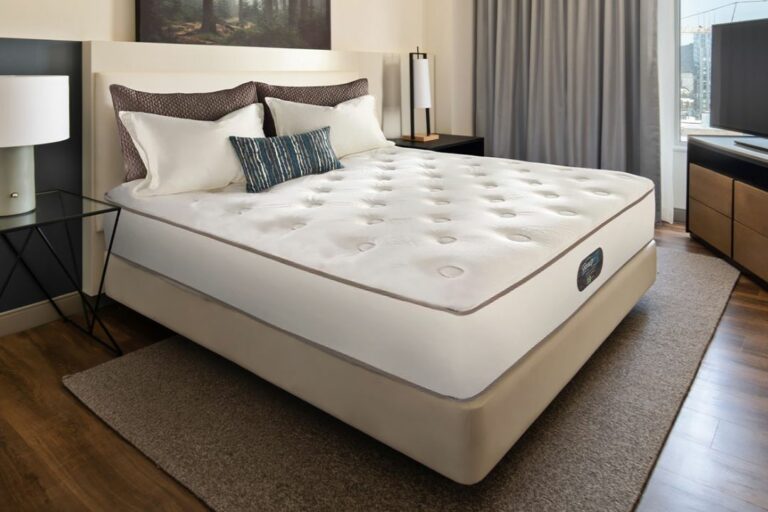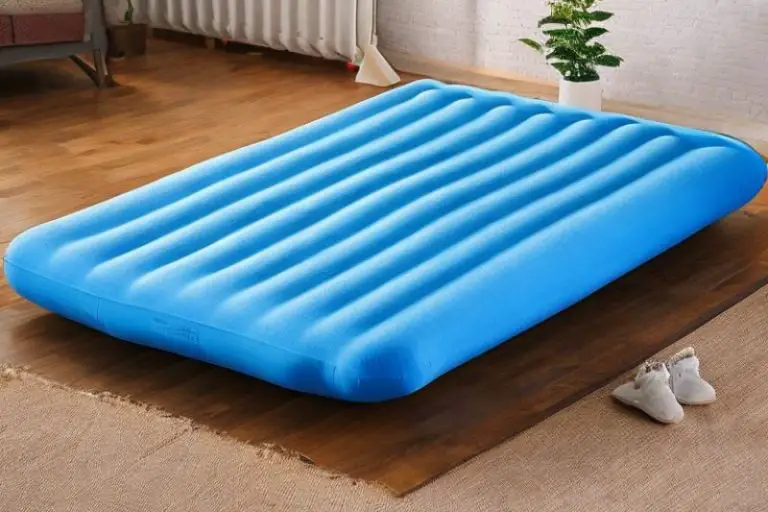Preventing Bed Bugs: (The Efficacy of Mattress Covers!)

Mattress covers have become a popular solution for preventing bed bugs.
These covers are designed to create a barrier between the mattress and the bed bugs, preventing them from entering and infesting the mattress.
But do they really work? So,
Preventing Bed Bugs:
According to experts, mattress covers can be an effective tool in preventing bed bugs. When used properly, these covers can trap any bed bugs that are already in the mattress and prevent new ones from getting in.
However, it is important to note that mattress covers alone are not enough to completely eliminate a bed bug infestation.
Other measures, such as vacuuming and professional pest control, may also be necessary.
If you are considering using a mattress cover to prevent bed bugs, it is important to choose a high-quality product that is specifically designed for this purpose.
Look for covers that are made from durable materials and have a tight zipper closure.
It is also important to regularly inspect the cover for any signs of wear or damage, as even a small tear can render the cover ineffective.
What are Bed Bugs?
Bed bugs are small, reddish-brown insects that feed on the blood of humans or animals.
They are usually found in mattresses, box springs, and bed frames, but can also be found in other areas of the home such as baseboards, electrical outlets, and furniture.
Bed bugs are nocturnal and are most active at night when they come out to feed.
Bed bugs are not known to transmit diseases, but their bites can cause itching, swelling, and allergic reactions in some people.
They are also notoriously difficult to get rid of once they infest a home, as they can hide in small cracks and crevices and reproduce quickly.
Bed bug infestations have become increasingly common in recent years, with reports of infestations in hotels, apartments, and even public transportation.
It is important to take precautions to prevent bed bugs from infesting your home, including using mattress covers and inspecting secondhand furniture before bringing it into your home.
How to Identify Bed Bugs?
Bed bugs are small, reddish-brown insects that are about the size of an apple seed.
They are flat and oval-shaped, with six legs and two antennae. Bed bugs are nocturnal and feed on human blood, usually at night.
They are attracted to warmth and carbon dioxide, which is why they are commonly found in mattresses, bedding, and other areas where people sleep.
One way to identify bed bugs is to look for bites on the skin. Bed bug bites are usually small, red, and itchy, and they may be in a line or cluster.
However, not everyone reacts to bed bug bites, so it is not a reliable way to identify an infestation.
Another way to identify bed bugs is to look for physical signs of their presence. Bed bugs leave behind small, dark spots on mattresses, bedding, and other surfaces.
These spots are actually bed bug feces, which are made up of digested blood. Bed bugs may also leave behind shed skins and eggs, which are tiny and white.
If you suspect that you have a bed bug infestation, it is important to act quickly. Bed bugs reproduce quickly and can spread throughout a home or building in a short amount of time. It is recommended to contact a pest control professional to inspect and treat the infestation.
Can bed bugs get through a mattress cover?
Bed bugs are small, flat, reddish-brown insects that feed on the blood of humans and animals.
They can hide in many places, including bed frames, mattresses, furniture, and clothing.
Mattress covers are often used as a way to prevent bed bugs from infesting a mattress, but the question remains: can bed bugs get through a mattress cover?
The answer is not straightforward, as it depends on the type and quality of the mattress cover.
Some mattress covers are specifically designed to be bed bug-proof, while others may offer some level of protection but are not completely effective.
Bed bug-proof mattress covers are made of tightly woven fabric that is designed to prevent bed bugs from penetrating the cover and reaching the mattress.
These covers typically have a zipper that is also bed bug-proof, which means that bed bugs cannot enter or exit through the zipper.
Bed bug-proof mattress covers are often made of materials such as vinyl, polyester, or polypropylene, which are durable and resistant to tears and punctures.
However, not all mattress covers are bed bug-proof.
Some covers may be made of thinner materials that are more easily penetrated by bed bugs.
Additionally, if the cover is not installed properly or has gaps or tears, bed bugs may be able to find their way into the mattress.
It’s important to note that even if a mattress cover is bed bug-proof, it does not guarantee that bed bugs will not be present in the room or elsewhere in the home.
Bed bugs can still hide in other areas of the room, such as baseboards, electrical outlets, or furniture.
Therefore, it’s important to take other preventative measures, such as regularly inspecting and cleaning the room, using bed bug interceptors, and avoiding bringing secondhand furniture or clothing into the home.
In summary, bed bug-proof mattress covers can be effective at preventing bed bugs from infesting a mattress, but it’s important to choose a high-quality cover and ensure that it is installed properly. It’s also important to take other preventative measures to reduce the risk of a bed bug infestation.
What kind of mattress cover do you need for bed bugs?
If you’re looking to protect your mattress from bed bugs, it’s important to choose the right kind of mattress cover.
A bed bug-proof mattress cover is designed to prevent bed bugs from penetrating the cover and infesting your mattress.
Here are some key features to look for when choosing a mattress cover for bed bugs:
- Zipper: Look for a mattress cover with a zipper that is bed bug-proof. This means that the zipper has small teeth that are too small for bed bugs to pass through. The zipper should also be strong and durable, and should not easily break or come apart.
- Material: The material of the mattress cover is also important. Bed bug-proof covers are typically made of tightly woven fabric that is resistant to tears and punctures. Some common materials used for bed bug-proof covers include vinyl, polyester, or polypropylene.
- Size: Make sure to choose a mattress cover that fits your mattress snugly. If the cover is too loose, bed bugs may be able to find their way inside. On the other hand, if the cover is too tight, it may tear or become damaged over time.
- Breathability: Look for a mattress cover that is breathable and allows air to circulate. This can help prevent mold and mildew from forming inside the cover.
- Allergen protection: Some mattress covers also offer protection against allergens such as dust mites, pet dander, and pollen. If you suffer from allergies, look for a mattress cover that offers this additional protection.
When choosing a mattress cover for bed bugs, it’s important to choose a high-quality cover that is specifically designed for this purpose.
Bed bug-proof covers may be more expensive than regular mattress covers, but they can provide peace of mind and help prevent a bed bug infestation.
Is there a bed bug proof bed?
While there is no such thing as a completely bed bug-proof bed.
There are certain types of beds and bedding materials that are less attractive to bed bugs and can help reduce the risk of a bed bug infestation.
Here are some options to consider:
- Metal bed frames: Bed bugs prefer to hide in wood and fabric, so metal bed frames can be less attractive to them. However, it’s still possible for bed bugs to hide in other parts of the bed, such as the mattress or bedding.
- Platform beds: Platform beds are low to the ground and have fewer hiding places for bed bugs. They also often have smooth surfaces that are less attractive to bed bugs than wood or fabric.
- Latex mattresses: Latex mattresses are made of a material that is less hospitable to bed bugs. This is because latex is naturally resistant to dust mites and other allergens, which can also make it less attractive to bed bugs.
- Memory foam mattresses: Memory foam mattresses are also less hospitable to bed bugs than traditional innerspring mattresses. This is because they have fewer crevices and hiding places for bed bugs to hide.
- Silk bedding: Silk bedding is less attractive to bed bugs than cotton or other fabrics. This is because silk is smoother and less porous, which makes it more difficult for bed bugs to hide and lay eggs.
While these options can help reduce the risk of a bed bug infestation, it’s important to remember that there is no such thing as a completely bed bug-proof bed.
Bed bugs can still find their way into the bed through other means, such as hitchhiking on clothing or luggage.
Therefore, it’s important to take other preventative measures, such as regularly inspecting and cleaning the room, using bed bug interceptors, and avoiding bringing secondhand furniture or clothing into the home.
Conclusion: Will mattress covers prevent bed bugs?
In conclusion, mattress covers can be an effective tool in preventing bed bugs from infesting your mattress.
Bed bug-proof mattress covers are designed to prevent bed bugs from penetrating the cover and reaching the mattress.
They are typically made of tightly woven fabric that is resistant to tears and punctures, and have a zipper that is also bed bug-proof.
However, it’s important to choose a high-quality cover and ensure that it is installed properly.
If the cover is not bed bug-proof or has gaps or tears, bed bugs may be able to find their way into the mattress.






